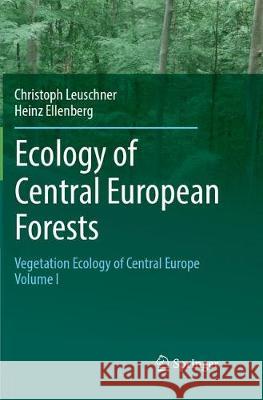Ecology of Central European Forests: Vegetation Ecology of Central Europe, Volume I » książka
topmenu
Ecology of Central European Forests: Vegetation Ecology of Central Europe, Volume I
ISBN-13: 9783319827230 / Angielski / Miękka / 2018 / 972 str.
Kategorie:
Kategorie BISAC:
Wydawca:
Springer
Język:
Angielski
ISBN-13:
9783319827230
Rok wydania:
2018
Wydanie:
Softcover Repri
Ilość stron:
972
Oprawa:
Miękka
Wolumenów:
01











